Error E1 on Midea dishwasher
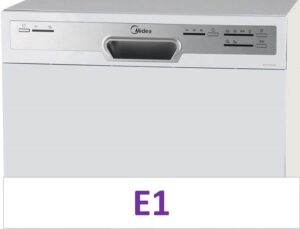 Every housewife wants her household appliances to always work perfectly without the slightest glitch, but this is impossible, given the natural wear and tear of parts. Therefore, you should always be prepared for the fact that during the operating cycle a fault code will appear on the display, which will interfere with washing. One of the most common problems is error E1, associated with difficult water intake or its complete absence. We'll tell you why this happens and how to correct the situation.
Every housewife wants her household appliances to always work perfectly without the slightest glitch, but this is impossible, given the natural wear and tear of parts. Therefore, you should always be prepared for the fact that during the operating cycle a fault code will appear on the display, which will interfere with washing. One of the most common problems is error E1, associated with difficult water intake or its complete absence. We'll tell you why this happens and how to correct the situation.
List of possible faults
When any error code appears, you first need to do your own diagnostics to determine the cause of the malfunction and then, if possible, eliminate it. During the initial check, a partial analysis of the Midea “home assistant” is not necessary, because you first need to study the auxiliary factors. What to do during initial actions?
- Check the water pressure in the pipes to see if there is any at all. Perhaps you are faced with a water supply cutoff, which is why the machine cannot draw water. Open any faucet in the house to test this theory.
- Examine the shut-off valve in front of the tee tap, which could be closed, which is why it did not supply water to the Midea dishwasher.
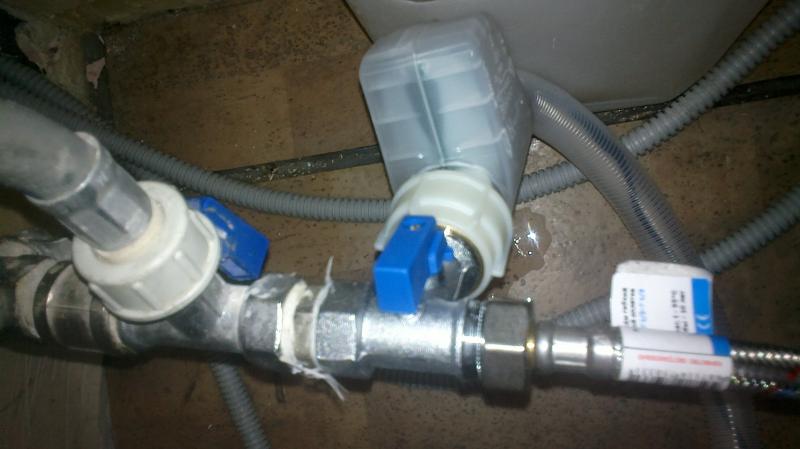
- See if the machine door is closed all the way - if the washing chamber door is not closed until it clicks, the unit will not work, which is why the device will not start drawing water.
- Assess the condition of the inlet hose, which could have been accidentally damaged, bent or pinched by the dishwasher itself, which could have crushed it.
If none of the above works, then the problem may lie in the design of the machine itself.In this case, error E1 could appear due to the following elements:
- clogged flow filter;
- clogged coarse filter;
- activated Aquastop system, which protects equipment from leaks;
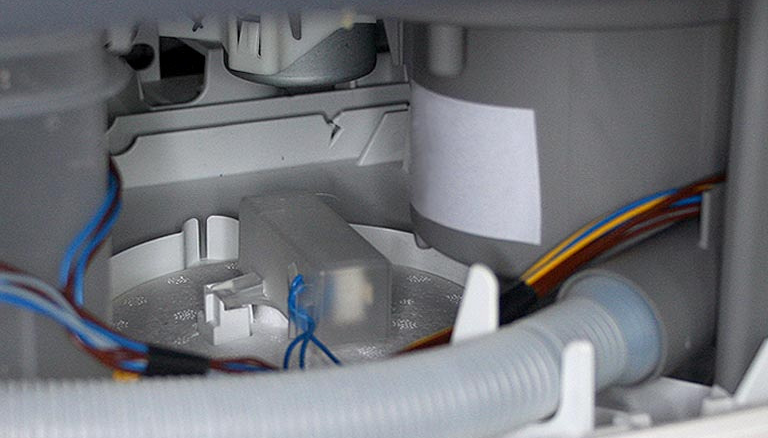
- broken UBL. If the Midea dishwasher door lock device fails, the door will not be locked and the control board will not receive a signal that the system is completely sealed, after which it starts drawing water;
- a non-functioning intake valve, which could have stopped functioning due to a simple blockage or damage from water hammer;
- a damaged water level sensor that transmits incorrect data about the amount of water or does not transmit information at all. If this happens, the equipment will not be able to start the work cycle;
- faulty dishwasher control board.
You can clean clogged filters, as well as replace a faulty water level sensor, inlet valve or UBL yourself, if you carefully follow our instructions. But before you start repairing, make sure that the warranty on your household appliance has expired. If the warranty is still valid, then it is better to contact a service center, where they will check and repair the machine for free. If the equipment was purchased a long time ago, then you can do the repairs yourself.
Mesh in the valve
In Russia, error E1 very often appears due to poor-quality tap water. This is due to the fact that the tap liquid contains too many harmful impurities that can damage the internal components of the Midea dishwasher. To prevent this from happening, the device has a filter mesh installed that does not allow contamination to pass through. However, it sometimes gets clogged, so it needs to be cleaned at least once a year.What should I do for this?
- Disconnect equipment from all communications.
- Disconnect the inlet hose and drain all water from it.
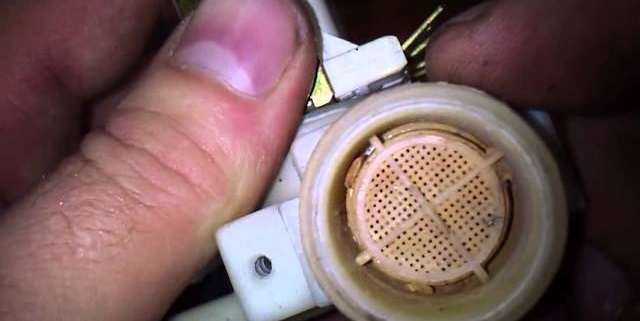
- Remove the debris filter and clean it thoroughly using a stiff brush and a strong stream of hot tap water.
If contaminants have penetrated too much into the filter, you can further soak it in a citric acid solution for about an hour.
- Place the filter element in its place.
To make the garbage filter less likely to clog, you can also install a flow filter in front of the inlet hose of the Midea dishwasher so that no contaminants from the water supply penetrate into your “home assistant”. Don’t forget that the additional filter also needs to be cleaned regularly.
The valve does not open normally
If the reason for the lack of water intake was not in the garbage filter, then the next step should be to check the solenoid valve, which could have failed. This part is installed in the upper part of the PMM, where the inlet hose is connected. The element can withstand pressure up to 1 MPa, however, due to water hammer, the pressure can greatly increase, which will lead to damage to the unit.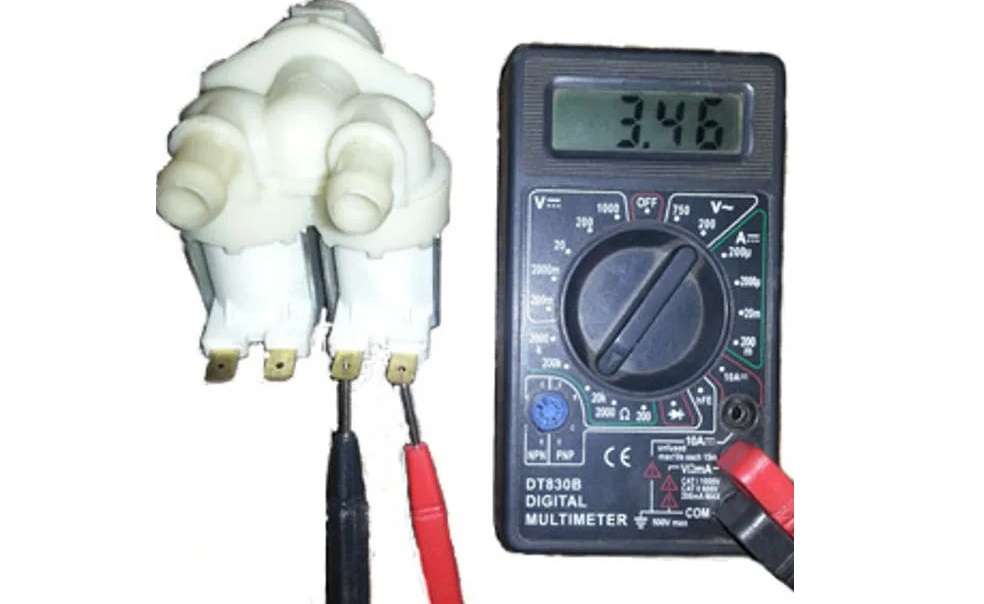
In addition, the valve may stop working normally due to an open circuit. If this is the problem, then there will be a long check of the wiring and contacts of the part. This will restore the connection between the solenoid valve and the control board of the Midea dishwasher and return the normal set of liquid for the operating cycle.
Also, the solenoid valve can become clogged with various debris, which will prevent the element from functioning. In this case, you just need to clean it by first removing it from its seat.
Finally, you need to check for an open in the valve coil.If this happens, then it is better not to try to restore the element, but to buy a new part in order to save time and effort, and also not to risk the performance of the Midea dishwasher.
Incorrect data from the pressure switch
The final reason that is worth paying attention to is the failure of the water level sensor. If the pressure switch stops sending data about the current water level, or starts transmitting incorrect information, the control board will simply stop drawing water to prevent a flood. This is due to the fact that the PMM control module will not be able to determine what to do in this situation, so it will simply take the specified precautions. In this case, partial disassembly of the equipment and checking the pressure switch using an ordinary multimeter will help to reset the error code.
- Disconnect the equipment from the water supply and electrical network.
- Lay the Midea dishwasher on its side.
- Remove the bottom of the device to provide free access to the key components of the unit.
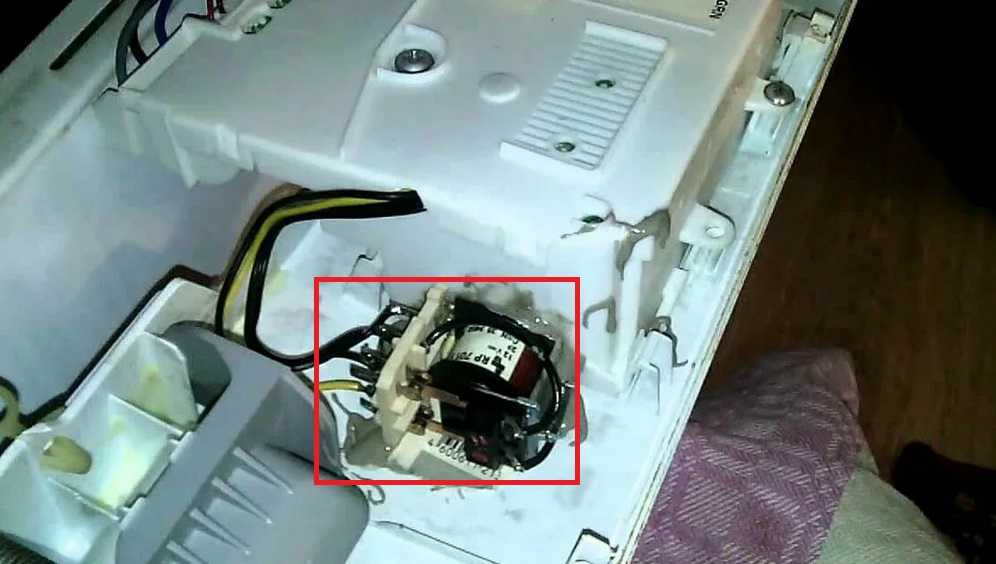
- Find a pressure switch that looks like a plastic washer.
- Carefully remove the tube from the water level sensor.
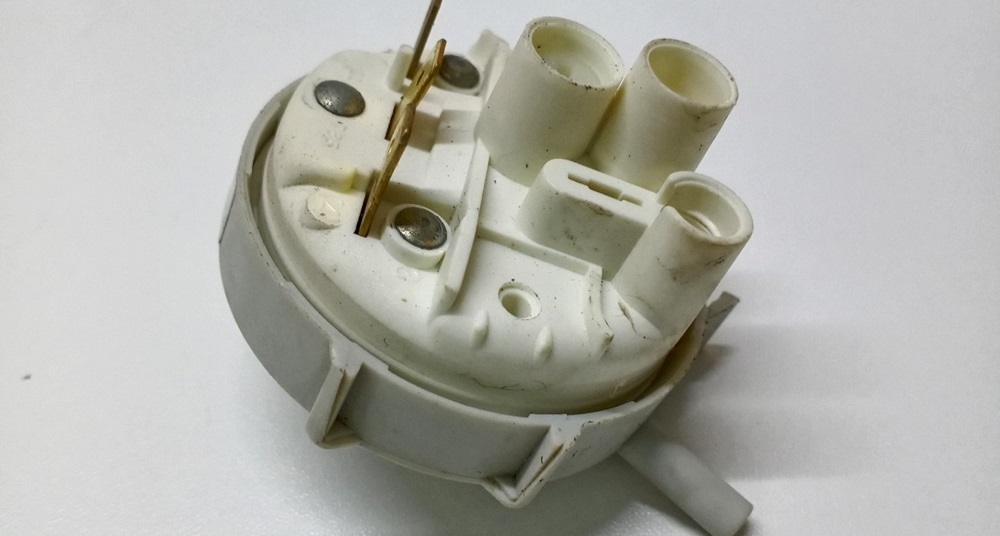
- Then disconnect the element fasteners, disconnect the wiring and the sensor itself.
Just in case, take a photo of the correct connection of the wires to the pressure switch so that you can use an example during reassembly.
At this stage, all that remains is to switch the multimeter to ohmmeter mode, connect its probes to the sensor contacts and measure the resistance. If the results obtained differ from the norm, then you should not try to repair the pressure switch - it is better to replace it with a working part in order to accurately reset the E1 error code.
The brain of the dishwasher
If all the previous problems turned out to be a “dummy”, then all that remains is the control board of the Midea dishwasher, which is called the “brain” of the entire system. Unfortunately, unlike previous PMM units, it is not possible to restore the electronic module with your own hands, because this requires not only experience and education, but also specific equipment. At the same time, if the board breaks down, further use of household appliances becomes impossible, so this reason is especially unpleasant for users. If this happens, then at home you can only examine the unit and make sure that it needs repair.
- Disconnect the machine from the power supply.
- Open the machine door.
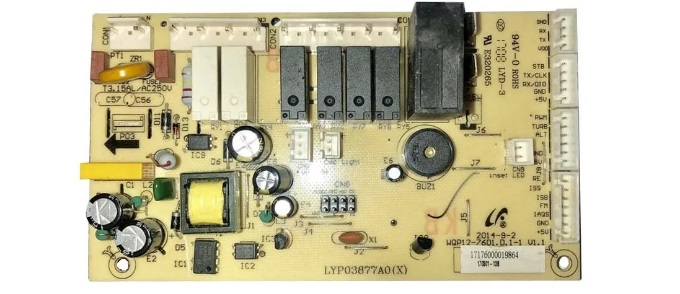
- Remove all fasteners from the door.
- Find the Midea PMM control board.
- Carefully examine the appearance of the electronic part.
If you find burnt wiring or tracks, then the problem is definitely in the “brain” of the dishwasher. A service center specialist will help you restore it, so don’t delay the repair in order to quickly get your “home assistant” in order. If damage cannot be detected with the naked eye, then you should call a repairman for a thorough diagnosis.
Interesting:
Reader comments
- Share your opinion - leave a comment




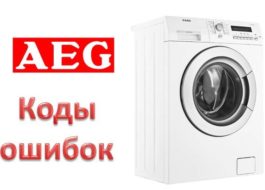

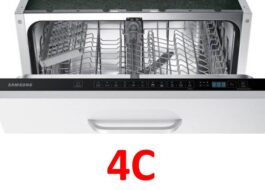














Add a comment